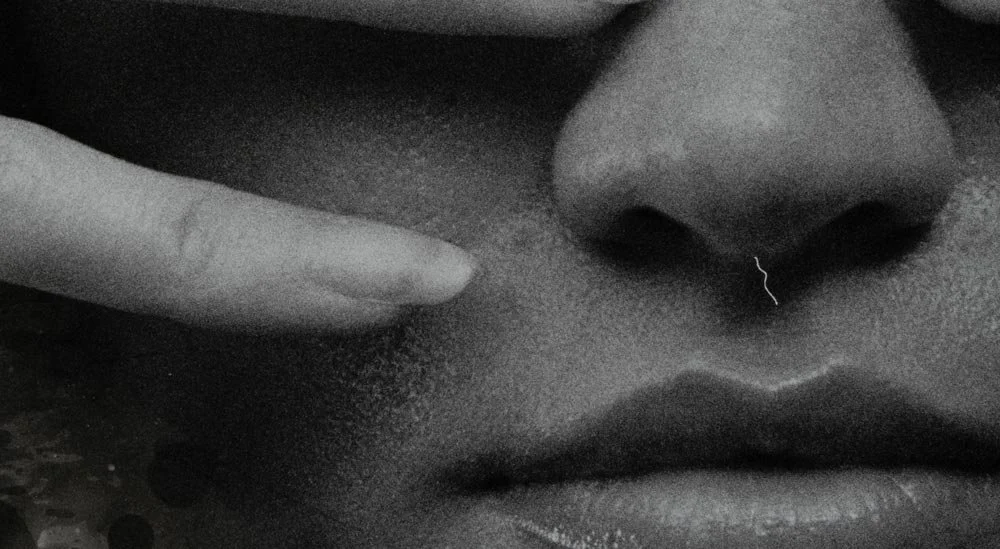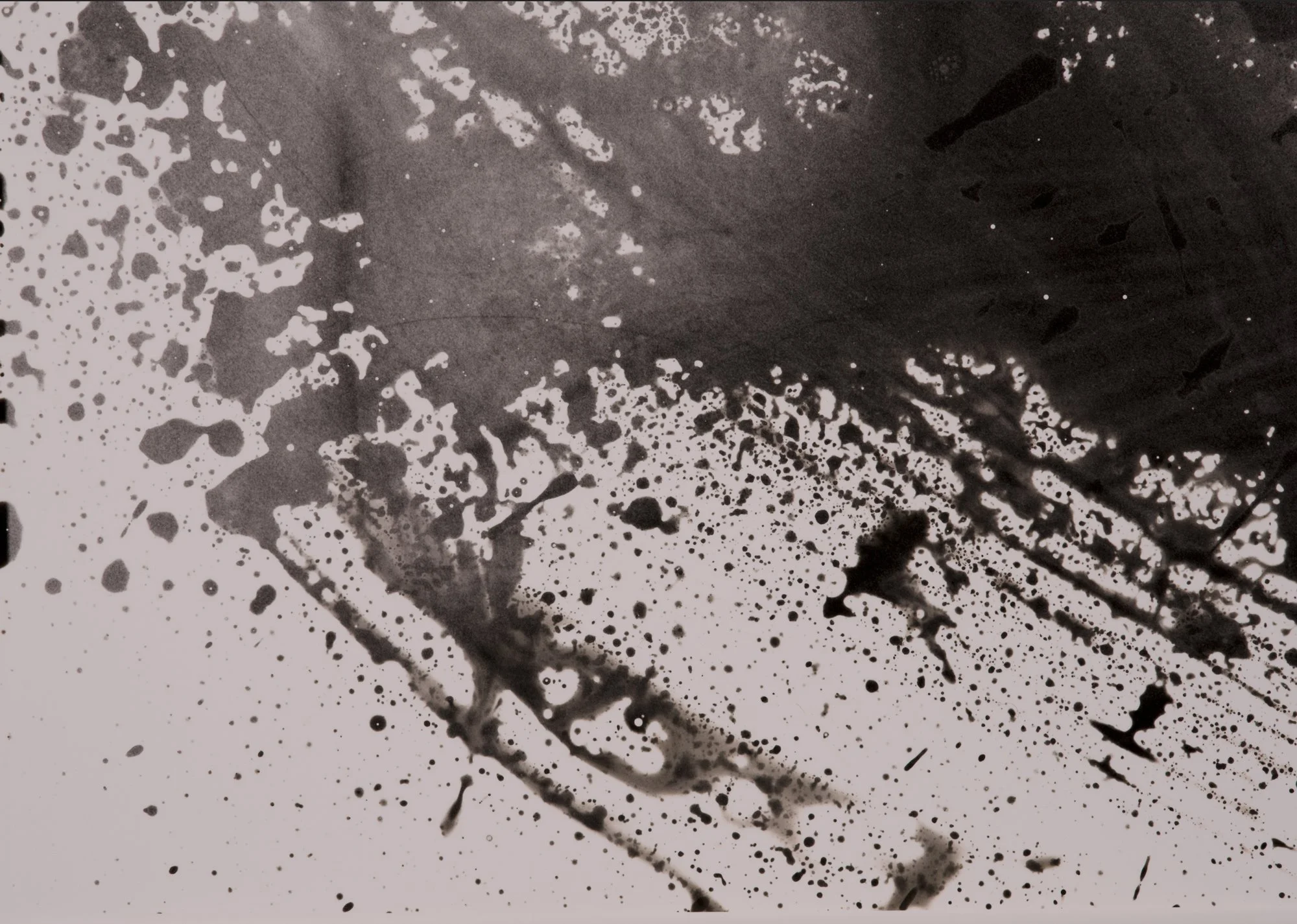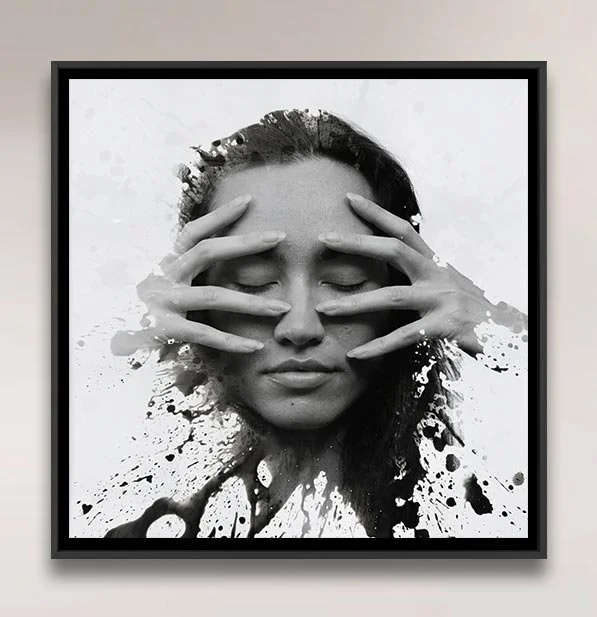Peaceful Minds
Peaceful Mind I
High-definition scan. Giclee print on Ilford Gold Fibre Gloss, dry mounted on Aluminium, raised floated, 2cm shadow gap, framed with AR70 Glass.
Print size 100 x 100cm
Edition of 5
Price: £5,000
Peaceful Mind II
High-definition scan. Giclee print on Ilford Gold Fibre Gloss, dry mounted on Aluminium, raised floated, 2cm shadow gap, framed with AR70 Glass.
Print size 100 x 100cm
Edition of 5
Price: £5,000
Peaceful Minds
Giacomo will exhibit two pieces from Peaceful Minds, titled Peaceful Minds I and Peaceful Minds II.
The project is a reflection on finding peace of mind in a chaotic and noisy world. The two images, featuring models Carli Groot Bluemink and Heeyeon Parl, were originally shot on Ilford HP5 and hand-printed in the darkroom (Kentish Town) on fibre base paper (Ilford Multigrade FB Classic Glossy).
For the prints, the developer is splashed, sprayed and brushed over the exposed paper, creating a sense of chaos and noise around the still, peaceful subjects. This process makes each of the 15 final fibre prints unique within the edition.
Two prints have been scanned at high resolution and will be presented to the public as giclée prints on Ilford Gold Fibre Gloss paper, mounted on Dibond with a raised float and framed with AR70 glass (100 × 100 cm), in editions of 5 each.
This project represents Mantovani’s commitment to analogue photography as a testament to authenticity in a digital world dominated by AI. As with his earlier series LCKDN20, dust, grain and small imperfections are treated as the DNA of the medium, not flaws to be removed.

Grain, hair and dust are the medium’s DNA — a testament to its authenticity.
In Giacomo’s prints, impurities such as dust and hair are left unretouched as proof that the work is analogue — and therefore authentic. In traditional photography, such impurities would typically be removed to prioritise a aesthetic.

Peaceful Mind II
Printed on Ilford Multigrade FB Classic Glossy 45x46 cm. Edition of 15.
Peaceful Mind I
Printed on Ilford Multigrade FB Classic Glossy 45x46 cm. Edition of 15.

Authenticity in a digital age
At a time when digital and AI-generated imagery increasingly blur the boundaries of what is real, Mantovani’s analogue practice stands in deliberate contrast — embracing film as a tangible testament to authenticity, a way of recording history that preserves the captured moment within the limits of realism.

About Giacomo Mantovani
Giacomo Mantovani built his reputation in the commercial field, producing creative projects for well-established clients including Rio Tinto, Nothing, Nokia, OnePlus and Logitech.
As an independent, award-winning filmmaker, director, and photographer, Giacomo has produced acclaimed short films such as ‘Plastic Garbage – Scourge of the Seas’ and ‘Lightning’, both shot entirely on smartphones. His dedication to the medium has made him an ambassador for mobile filmmaking and photography, leading him to host a series of panels and masterclasses.
In recent years, Giacomo has dedicated himself to analogue photography, developing projects such as LCKDN20, which reflect his passion for film and its timeless authenticity. His goal is to bring these prints to the most important museum collections in the world, to protect them and pass them on to the next generations.
Recently, Giacomo has donated the original film negative ‘Film 0_00004’ and the single-edition print ‘LCKDN20 – National Gallery F04’ to the National Gallery. Gabriele Finaldi, Director of the National Gallery, described the picture as “an image of great elegance and poignancy”, and the LCKDN20 project as “an extraordinary photographic project… both aesthetic and documentary.”
Mantovani said: “For me, it was important to treat this photograph like a one-of-one painting. The problem with photography is that, because an image can be replicated, it’s often not regarded as truly unique. By donating to the National Gallery both the only print and its original negative, my aim is to protect the work, give it greater significance, and ensure it can be passed on to future generations.”



